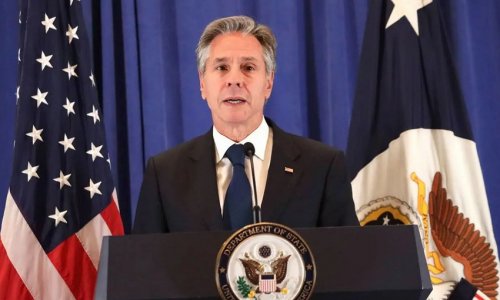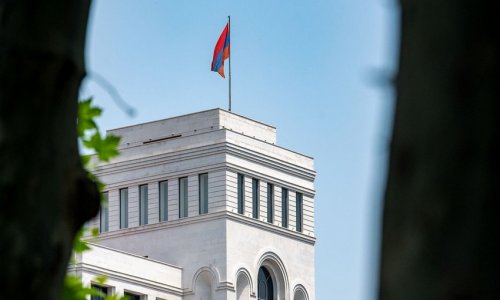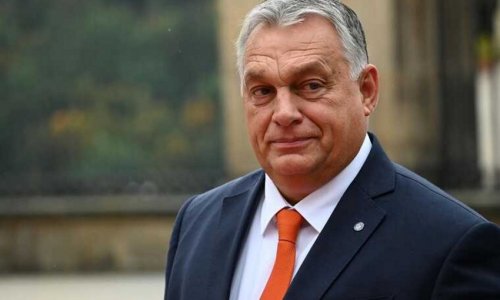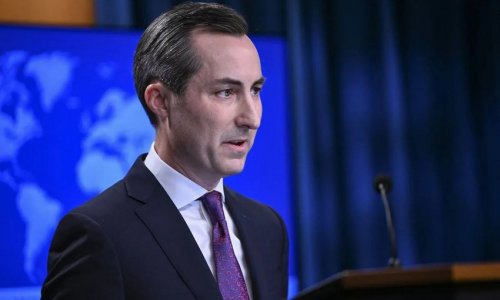Follow us !
Iran Makes Father of 19 Kids Hero as Nation Ages With Low Income - PHOTO
World
17:23 | 13.03.2014

Iran Makes Father of 19 Kids Hero as Nation Ages With Low Income - PHOTO
Qassem Ali-Loui was feted as a hero: Interviews on state television, armfuls of gifts, a tour of Milad Tower, Iran’s tallest building, and a free lunch at its revolving restaurant together with his wife and 19 children.A lifetime of prodigious procreation has made the farmer, whose family work fields in Western Azerbaijan province, an unlikely poster boy for government efforts to reverse a plunge in fertility. If it fails, Iran risks going prematurely gray, blighting the future of an economy pummeled for almost a decade by international sanctions and undermining its regional ambitions.Births in Iran dropped to 1.6 children per woman in 2012 from 6.4 kids three decades earlier, United Nations data show. The rate fell below that needed to prevent the population shrinking after Iran, its finances bled by a 1980s war with neighbor Iraq, scrapped incentives for larger families, and more women chose to study longer or find work.“In one generation, Iran registered one of the most rapid fertility declines ever recorded in human history,” said Nicholas Eberstadt, a political economist at the American Enterprise Institute in Washington, who conducts demographic research. It took Europe 300 years to record a similar drop, he said. “I’m skeptical that this trend can be reversed.”Enter Ali-Loui, his wife of 41 years and their brood of 11 girls and 8 boys, ages ranging from 35 to 7, according to the YJC news website. “In the old days, most of the rural families were farmers and having a child was seen as an asset,” he told the site. “Families needed their children to work alongside them.”‘Single Blossom’Restoring vigor to Iran’s population of 75 million has become a priority just as President Hassan Rouhani seeks an economic lifeline through the lifting of trade curbs imposed over the nation’s nuclear program. The sanctions, some of which were lifted under a November interim deal, cut oil revenues in half since 2012 and barred foreign investment.In December, billboards with the messages “A single blossom is not spring,” and “More children, better lives,” appeared across Tehran. They depicted a happy father and his four children -- three boys, one girl -- on a single bicycle, trailed by a sad looking dad with his only son. There was no sign of a mother.Iran’s average age rose to 27.8 years in 2013, up a decade from the 1979 Islamic revolution, and is forecast to reach 42.2 by 2050, higher than about 41 years predicted by Pew Research for the U.S. Tehran’s 1.4 births per woman is below that of London or Paris, said Eberstadt.Poor, Gray“If we move forward like this, we’ll be a country of elderly people in the not-too-distant future,” Supreme Leader Ayatollah Ali Khamenei, a father of six, said in October. “There was an imitation of western life and we inherited this.”Recognizing the need for a dynamic future workforce, Rouhani plans to raise maternity leave to nine months from six and grant new fathers 10 days off, at a cost of at least 6 trillion rials ($242 million).The plan falls short of the economic emancipation of women other countries are embracing to fend off the dangers posed by a graying workforce. In Japan, faced with an aging population and a debt burden twice as big as its economy, Prime Minister Shinzo Abe is promoting an equal role for women as a more effective response to a shrinking labor pool than immigration or raising the birth rate. Among steps he’s suggested: Expanding childcare provision and training mothers to return to work.‘Enormous Burden’As the foot-soldiers of Iran’s revolution near retirement, an aging population may curb the power aspirations of Iran’s ruling clerics. Regional influence comes with an economy capable of paying for it, said Eberstadt.“Iran’s looking at a future that’s low income and gray,” he said. That will be an “enormous burden.” The nation’s average income was about $7,000 in 2011, according to the UN.The International Monetary Fund said in February that Iran required deep labor and credit reforms to escape economic contraction and inflation of about 30 percent. Growth over the next 12 months may be as low as 1 percent.Shah Mohammed Reza Pahlavi had introduced family planning in the late 1960s, adopting a two-child policy. After the 1979 revolution, and the outbreak of war the following year, leaders dismantled the program, providing benefits for women willing to deliver an Islamic generation. By 1986, Iran had one of the world’s highest fertility rates.Another AgeFaced with reconstruction costs and declining oil revenues after 8 years fighting its neighbor, Iran urged moderation. By 1993, inducements were restricted to three children and couples planning to marry had to attend birth-control classes.Something else changed. Women headed for universities and more took jobs. They now account for 60 percent of university students but less than 20 percent of the formal workforce.Women want careers, not large families, said Farzaneh Roudi-Fahimi, director for the Middle East and North Africa at the Washington-based Population Reference Bureau.“In the 1970s, family planning clinics in rural areas gave the pill to the husband. Today, they hand out condoms to the wife,” she said. “It shows you who’s in control.”The trend is to have one child, or at the most two, said Golnaz, 29, an office manager in Tehran, who’s single.“It takes time to have the financial stability to get married,” she said, declining to give her last name. “It’s an economic problem. If you have kids, you need money.”Ali-Loui is from another age.“Iranian women have made great strides,” said Leila Alikarimi, a lawyer familiar with Rouhani’s legislation. “The new push for larger families is an effort to send women back inside the home.”(bloomberg.com)ANN.Az










